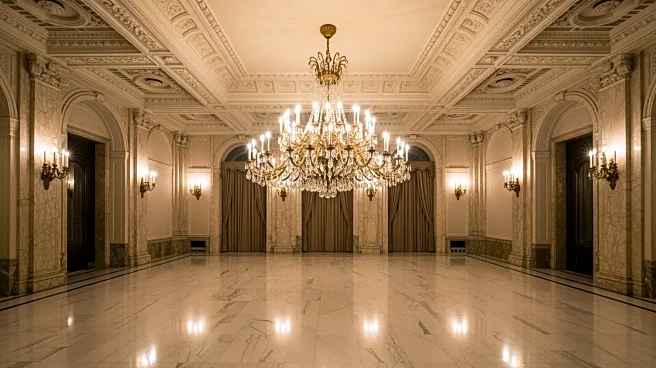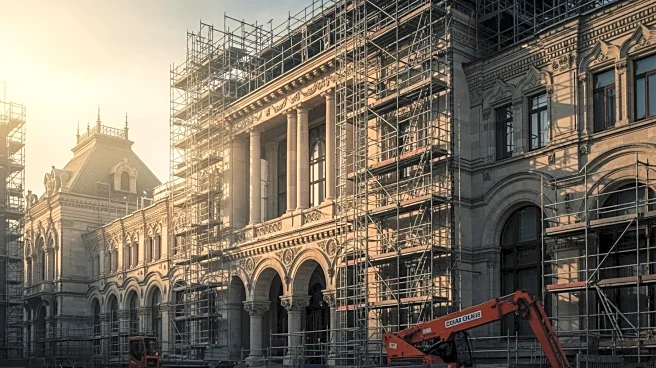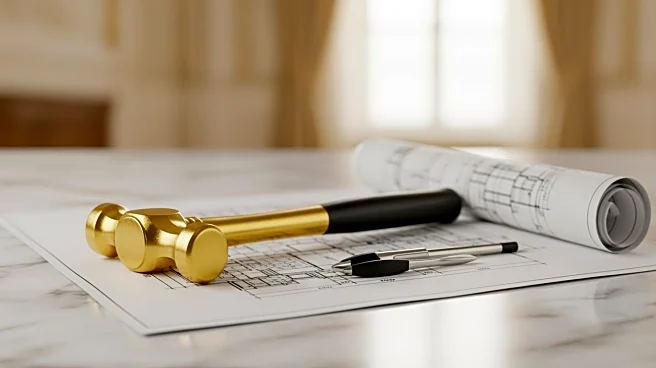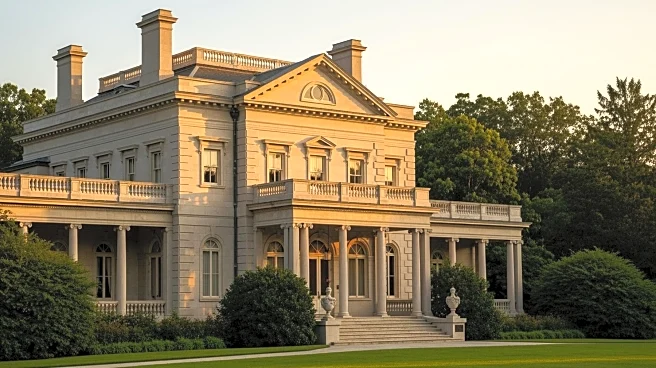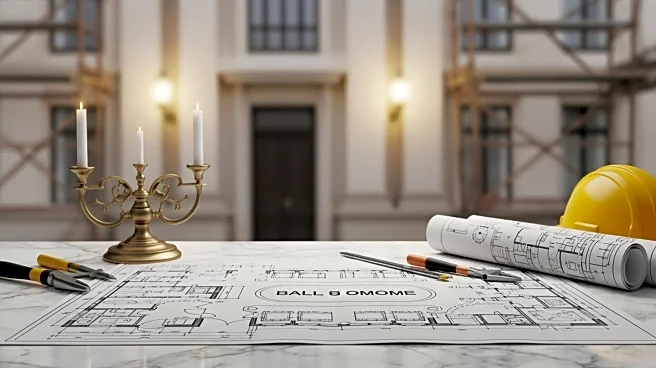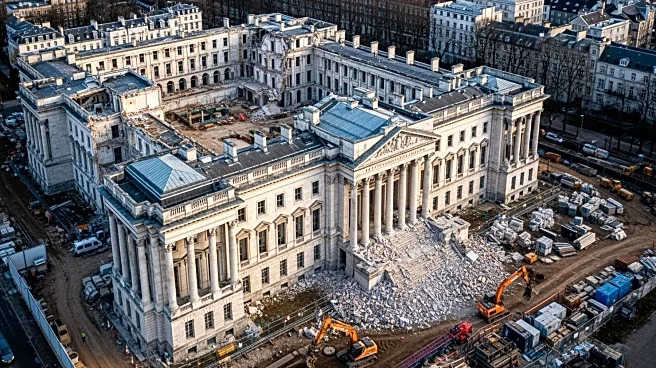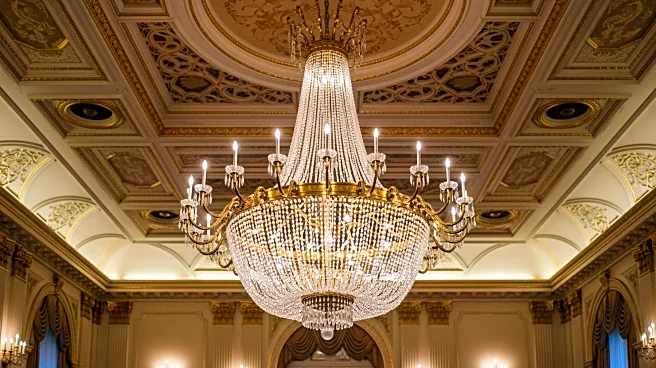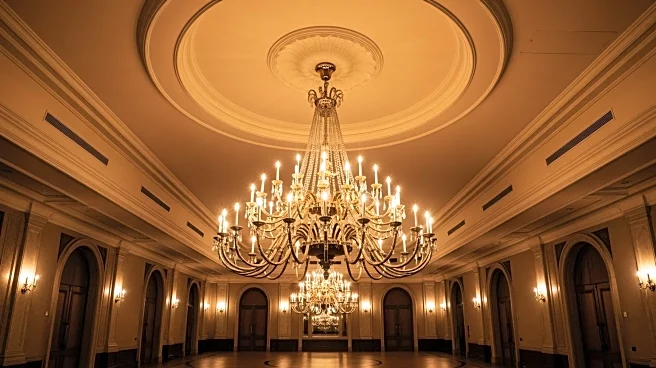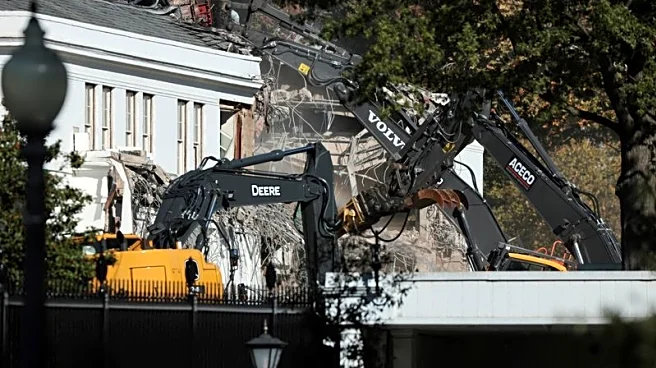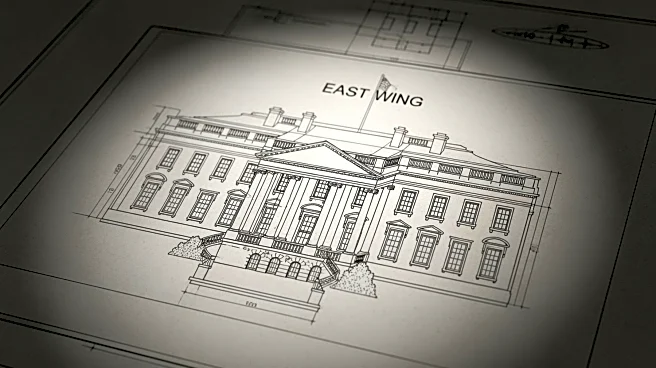What's Happening?
President Trump has initiated the teardown of the White House's East Wing to construct a new ballroom, a move that has stirred controversy. The project, which aims to create a 90,000-square-foot addition
capable of accommodating 999 guests, is seen by some as a bold vision and by others as a disregard for historical norms. The ballroom is intended to address the inadequacy of current event spaces, where tents are often erected on the South Lawn for state dinners. Despite criticism from preservationists, Trump bypassed traditional review processes, leveraging exemptions that apply to the White House. This decision has sparked discussions about the challenges of building in America, with comparisons drawn to other lengthy government projects.
Why It's Important?
The construction of the new ballroom at the White House highlights broader issues in U.S. infrastructure development, particularly the bureaucratic hurdles that often delay projects. Trump's approach, while controversial, underscores the tension between preservation and modernization. The ballroom could serve future administrations by providing a more suitable venue for large events, potentially influencing how government buildings are renovated or expanded. The project also raises concerns about conflicts of interest due to fundraising efforts, reflecting ongoing debates about transparency and ethics in government actions.
What's Next?
The completion of the ballroom may set a precedent for future White House renovations, potentially encouraging more direct approaches to infrastructure projects. Stakeholders, including preservationists and political leaders, may continue to debate the implications of bypassing traditional review processes. The ballroom's use by subsequent administrations could validate Trump's decision, while ongoing scrutiny of fundraising practices may lead to calls for stricter regulations. The project could also influence public opinion on government efficiency and the balance between historical preservation and modernization.
Beyond the Headlines
The construction of the ballroom touches on deeper cultural and ethical dimensions, such as the value placed on historical preservation versus the need for functional modernization. It reflects a broader societal shift towards questioning established processes and the role of government in facilitating or hindering progress. The project may also contribute to discussions about the influence of corporate donations in political decisions, highlighting the intersection of private interests and public policy.
